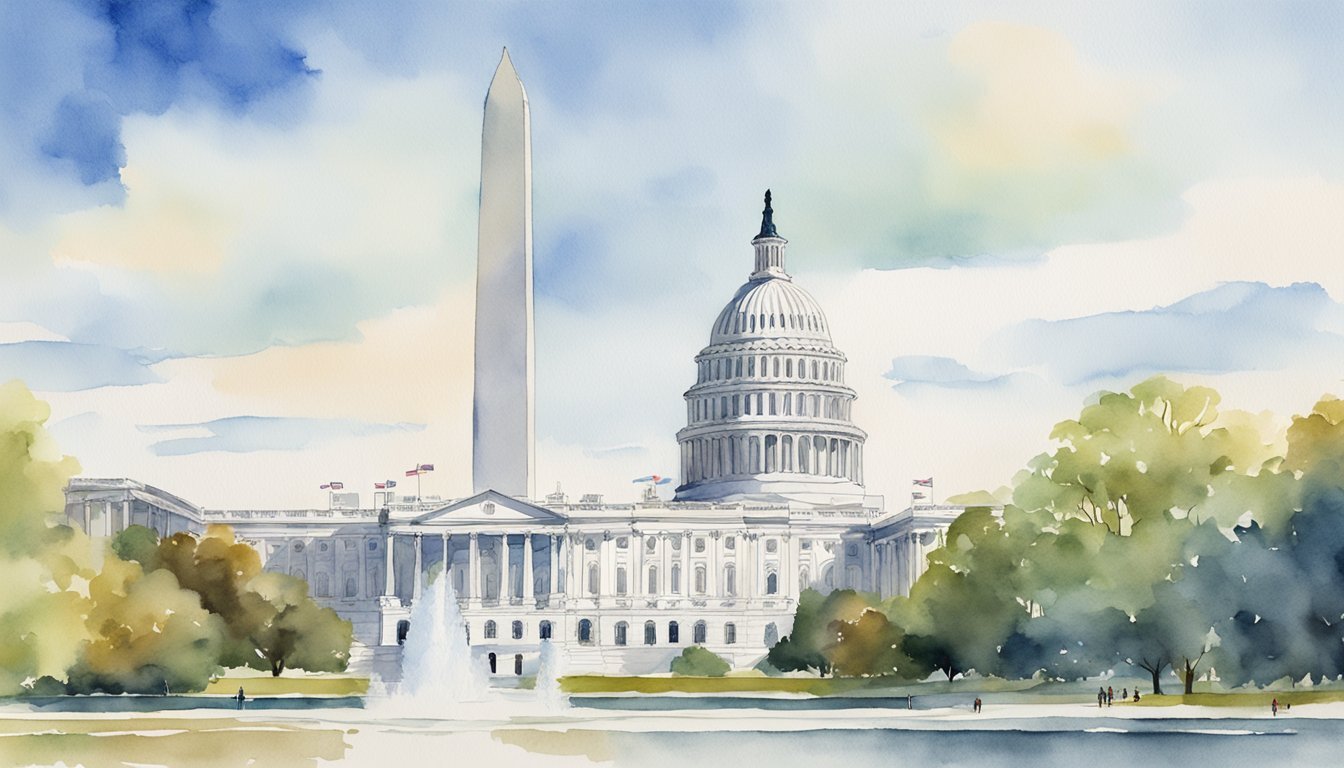Basics of Washington, D.C.

Washington, D.C., serves as the capital of the United States and is a hub for national politics and history. Known formally as the District of Columbia, it is a place where key decisions affecting the nation are made and a city steeped in rich historical significance.
Geography and Jurisdictions
The small yet influential city of Washington, D.C. is situated on the northern shore of the Potomac River. It shares its borders with Maryland to the north and east and is across the river from Virginia. Initially shaped like a diamond, the city’s geography is marked by the presence of both the Potomac and Anacostia Rivers. The land area of D.C. spans approximately 68 square miles.
History and Formation
Washington, D.C.’s history dates back to 1790, following the Residence Act. The site for the new capital was chosen by George Washington himself, with its design crafted by Pierre Charles L’Enfant. The city was named after President George Washington and the concept of “Columbia,” which was a historical poetic name for the United States. James Madison and other Founding Fathers envisioned the capital as an independent federal district not part of any state, and this was established in the U.S. Constitution to serve the needs of the federal government.
Government and Representation
The District of Columbia operates under a unique form of government. While it has its own Elected Mayor and City Council, it does not have voting representation in Congress. D.C. residents vote for a non-voting delegate to the House of Representatives and have no representation in the Senate. Despite being home to all three branches of the federal government and having a population larger than some states, the push for congressional representation and statehood has been a long-standing issue for its residents.
Cultural and Civic Significance

Washington, D.C. stands as the epicenter of American political power and a repository of the nation’s history and culture with institutions that house both the legislative and judicial branches of government, such as the U.S. Capitol, and agencies like the World Bank.
Landmarks and Museums
The city’s landscape is dotted with iconic structures like the Washington Monument and the Lincoln Memorial. The National Mall serves as a central arena for civic gatherings, prominent for hosting the annual July 4 fireworks. Thriving with numerous museums, including the Smithsonian Institution and the National Air and Space Museum, D.C.’s commitment to preserving American history and contributions to science and the arts is evident. Visitors and residents alike can explore a variety of cultural treasures, from the workings of the U.S. government at the Capitol Building to the historic influence of figures like Frederick Douglass, whose legacy is palpable in the Anacostia neighborhood.
Education and Institutions
The city is also a beacon for education and thought leadership, illustrated by Howard University and the Library of Congress. The highest U.S. educational institutions coexist with world-renowned centers for international policy and economics, such as the International Monetary Fund. Education in D.C. is a microcosm of the city’s diversity and also speaks to its global impact. Additionally, the Kennedy Center for the Performing Arts is a national stage for theater, dance, and music, showcasing the creativity and vibrancy of the city’s cultural scene.
Living in D.C.
To live in Washington, D.C. is not only to reside in the nation’s governmental hub but also to experience a city alive with a dynamic blend of history and development. Issues like the “Taxation Without Representation” slogan on license plates echo a unique local concern, referencing D.C.’s complex struggle for voting rights and representation in Congress. Despite lacking a voting member, the district’s residents actively participate in civic affairs, governed by a Mayor and a Council, as shaped by the Home Rule Act. Meanwhile, the everyday life in diverse districts such as Southeast and around landmarks like the Washington National Cathedral reflects a blend of cultural, historical, and civil life unique to the capital city.

